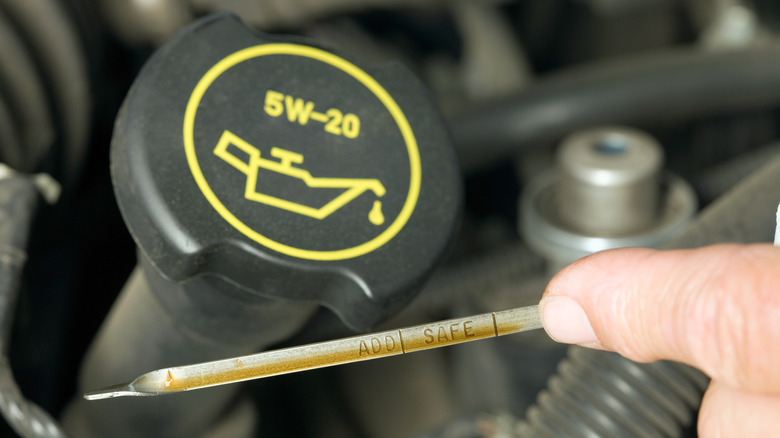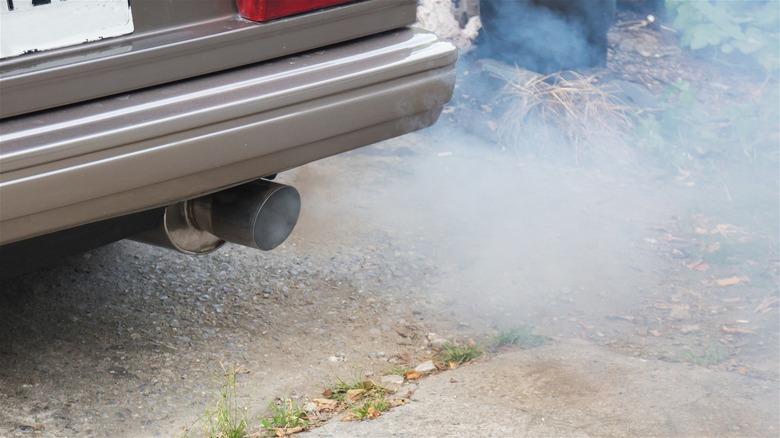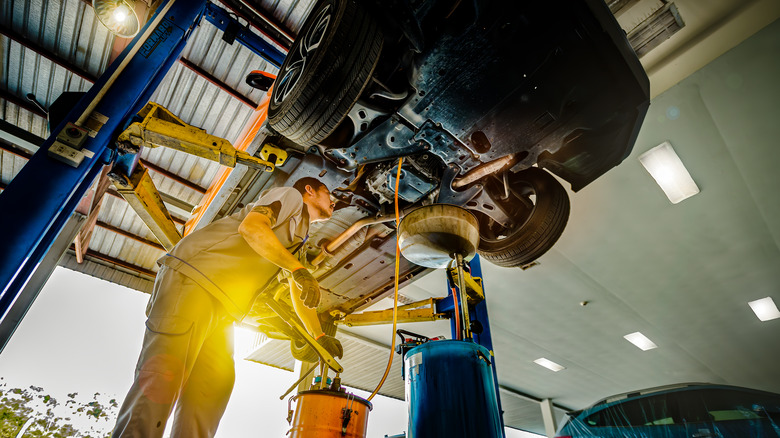What Does It Mean When Your Engine Is Burning Oil & Can You Fix It?
An automobile engine is a complex arrangement of moving metal components that require a critical element in order to function: oil. Without the lubrication provided by engine oil, friction, heat, and loose particles would have everything under the hood come to a screeching halt. Not only does this lubricant keep metal parts from grinding against each other, but it also aids in preventing corrosion from forming. This is why it's so critical to maintain the proper fluid levels and to learn the signs that your car's engine oil is running low.
However, there are places you don't want oil in your engine, and that's why select areas are sealed off with gaskets. When your vehicle begins to burn oil, in the simplest terms, it means that the lubricant has wandered into places it's not supposed to be. While unfortunate for your nose, the pungent smell is an indicator you might have a leak or, even worse, your engine may be on its deathbed.
It's important to remember your vehicle will likely use up more oil as it gets older. So, if you've had to add more oil under the hood of your high-milage car recently, it doesn't necessarily indicate a problem.
What causes oil to start burning?
There are essentially two main categories in terms of burning oil: external and internal. An external issue involves an oil leak from the lubrication system out onto blisteringly hot components. There are several places a leak could occur, such as the oil filter and drain plug, among others, due to failing seals, stripped threading, or improper installation. Even the oil pan itself could be the source of a leak, with the culprit again likely a gasket problem.
Fortunately, you can usually spot an external leak in the form of small puddles on the ground. The worst-smelling outside leak can come from places like a failing oil cap, where the viscous lubricant can run onto parts of the hot engine, creating a powerful odor. By far, the more serious issue is when oil is burning inside the engine. There are many possible causes of an internal leak, such as too much pressure inside the crankcase, causing seals to fail and oil to escape.
The most devastating situation you can find yourself regarding your car burning oil is when the piston rings have failed, allowing oil into the combustion chamber. One telltale sign oil is traveling into the combustion chamber is not only a strong smell but also smoke emanating from your tailpipe that exhibits a bluish coloration. A blue tint to your car's emissions is just one of the different colors of exhaust smoke that could indicate a problem.
If your car is burning oil, what can you do about it?
The approach to solving the issue depends on whether it's an external or internal problem. If you notice oil puddles after your car has been parked, you can try to trace it to the source, such as the aforementioned oil filter, drain plug, or oil pan. With just a bit of automotive knowledge, you can easily replace a bad oil filter, for example, and the repair is inexpensive. Of course, there are also many quick service shops that offer oil changes, where you can have a technician inspect and replace parts like the oil filter, among other things.
If the source of the burning oil is within the engine, unless you have extensive automotive repair experience and the proper professional tools, it's advised to visit a good mechanic. Not every potential cause of oil burning inside the engine is catastrophic, such as a case where built-up grime within undamaged cylinders could simply be cleaned by a mechanic.
However, damaged piston rings are another matter entirely. These rings can be replaced, but it requires taking apart the engine and then putting it back together, causing labor costs to skyrocket. A caustic odor isn't always related to oil; it's only one of the reasons why your car might smell like burning rubber. If you suspect your vehicle is experiencing issues and aren't certain of the cause, the best practice is to consult with a knowledgeable automotive professional.


